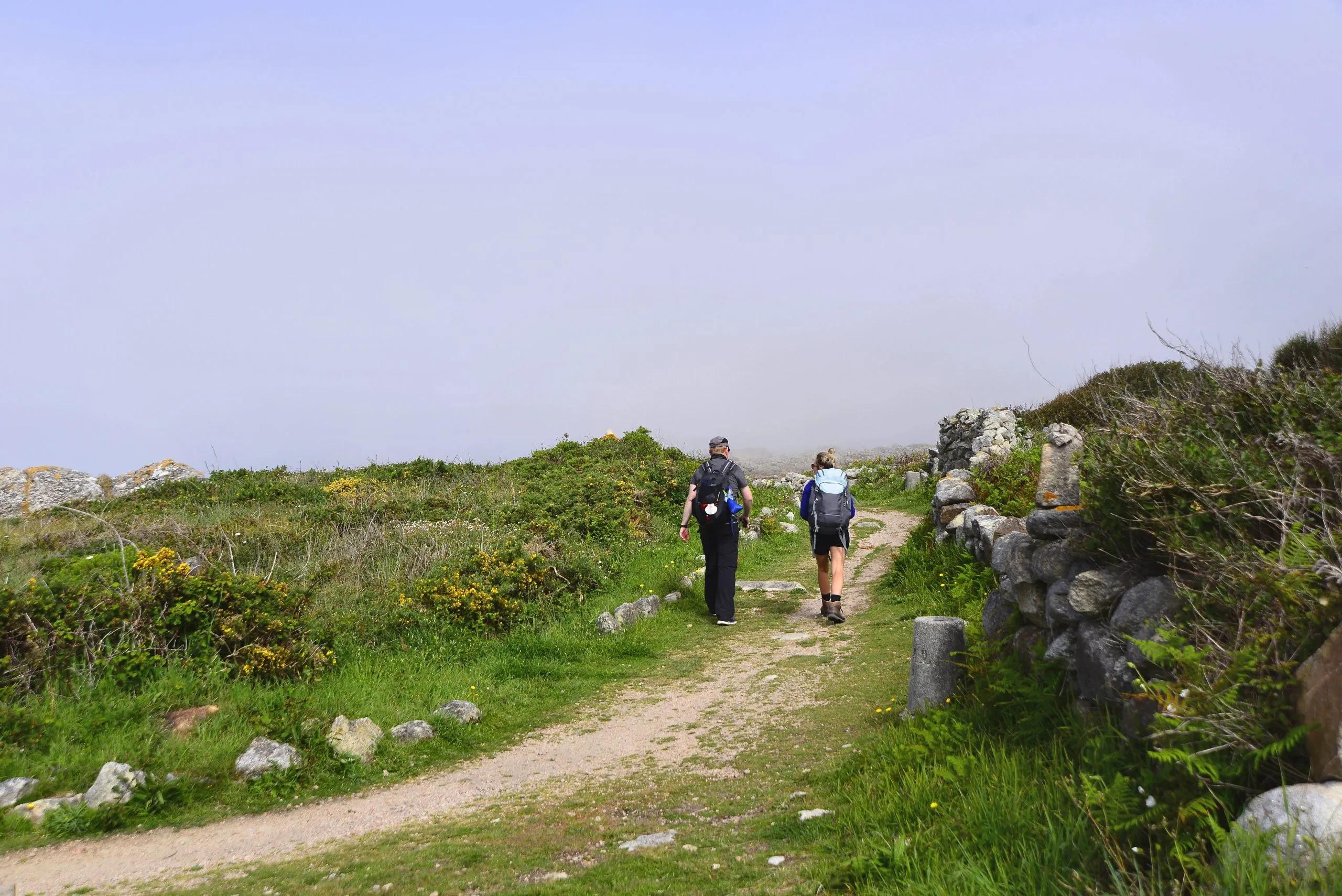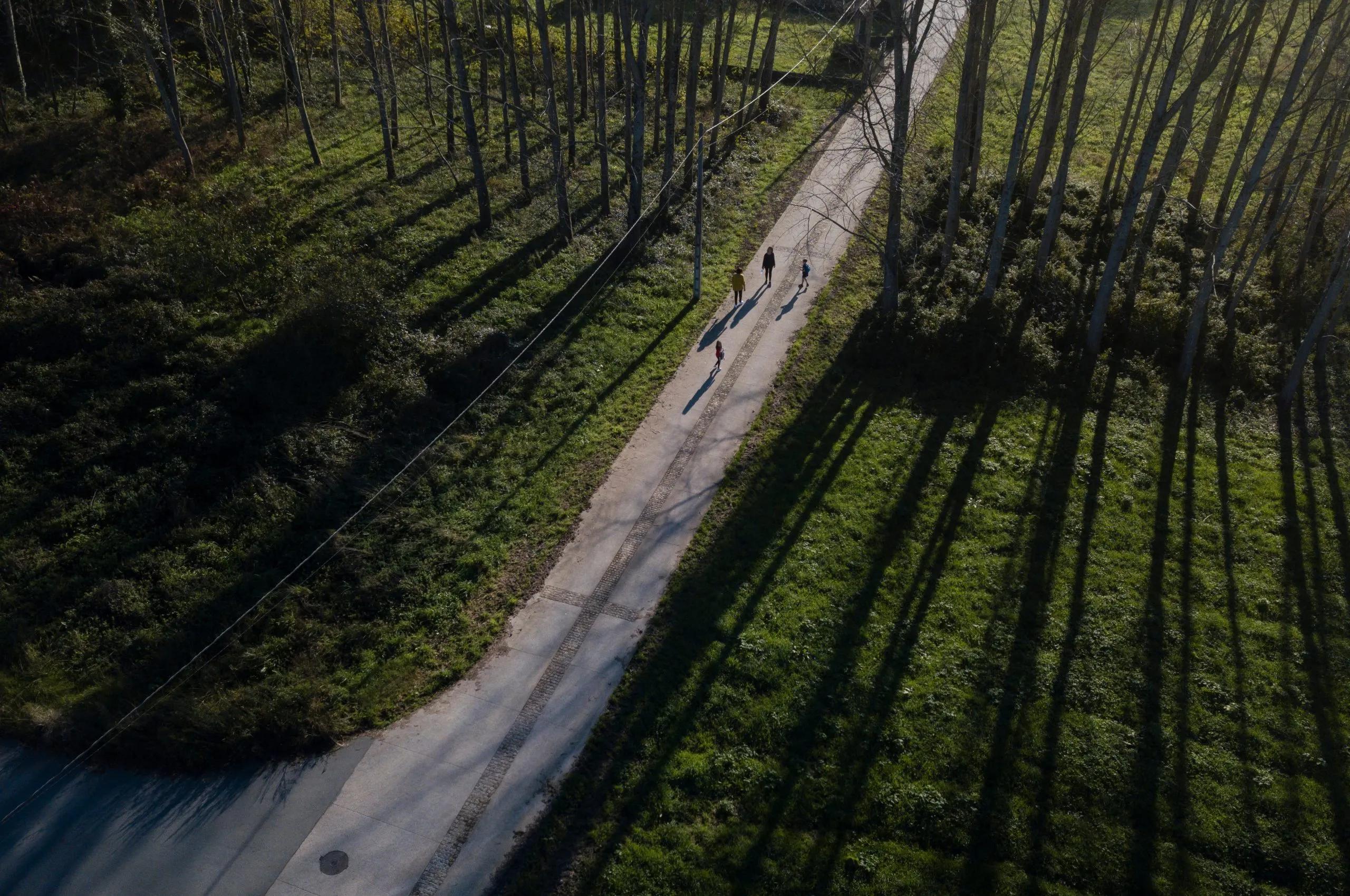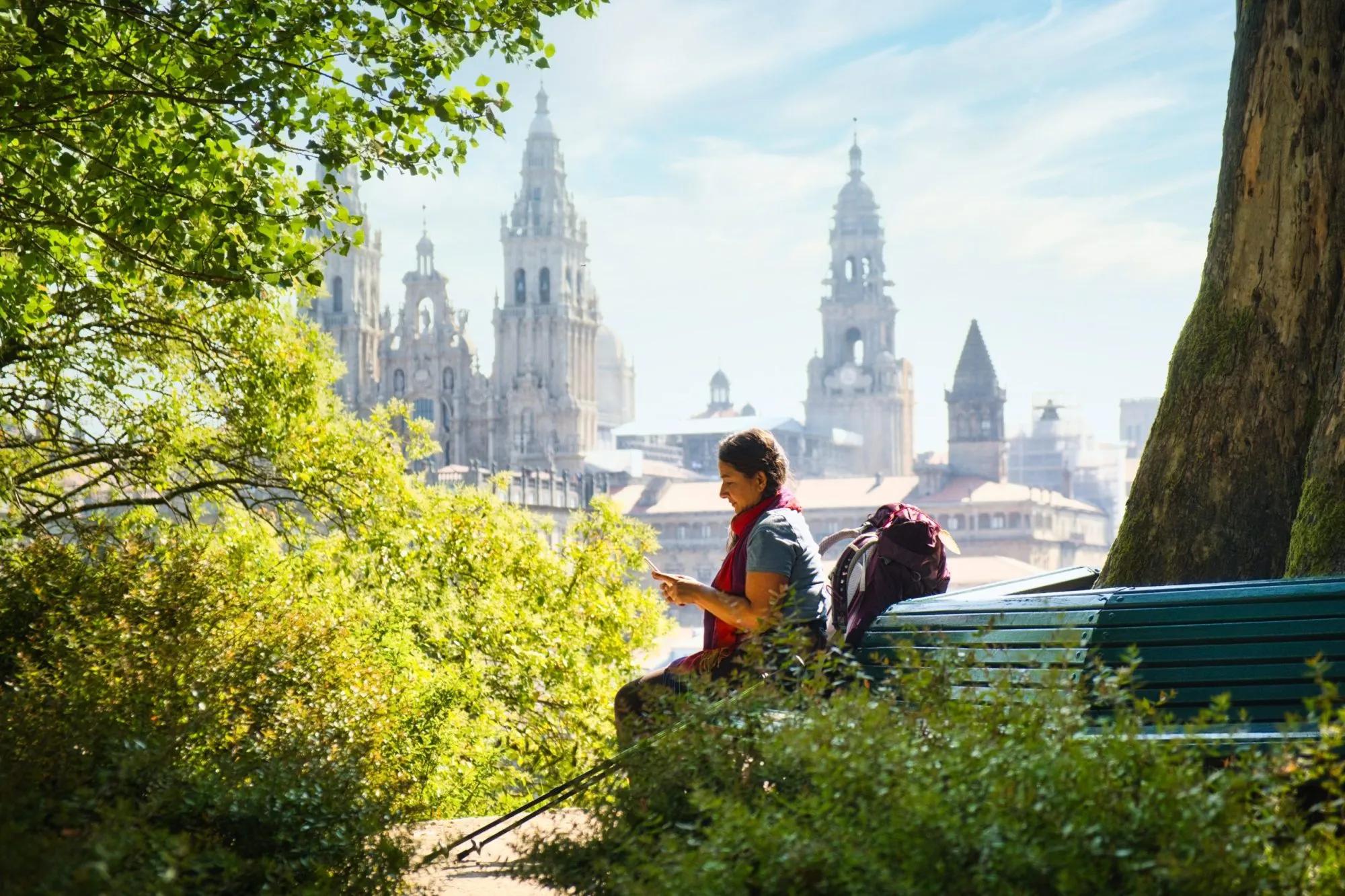
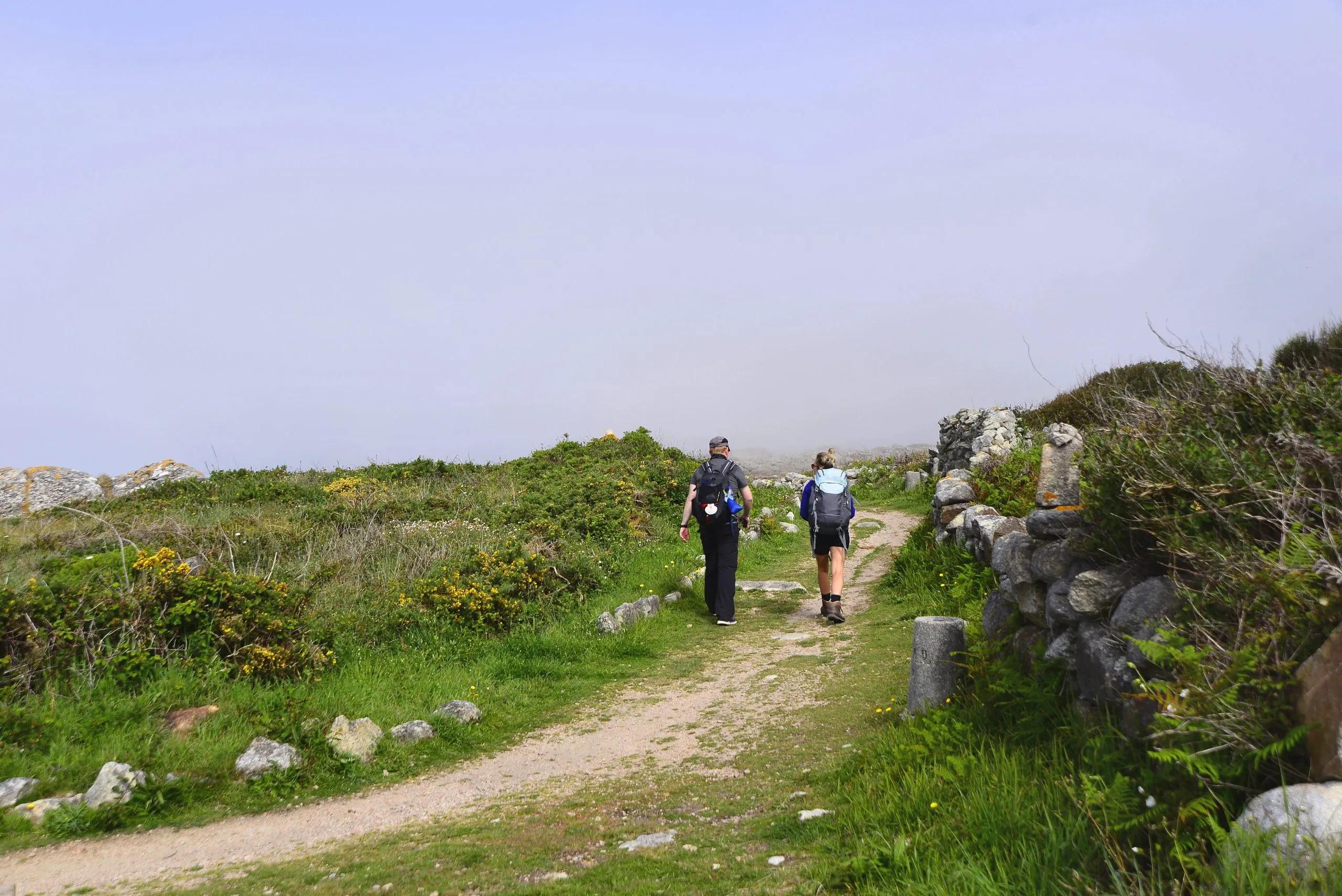
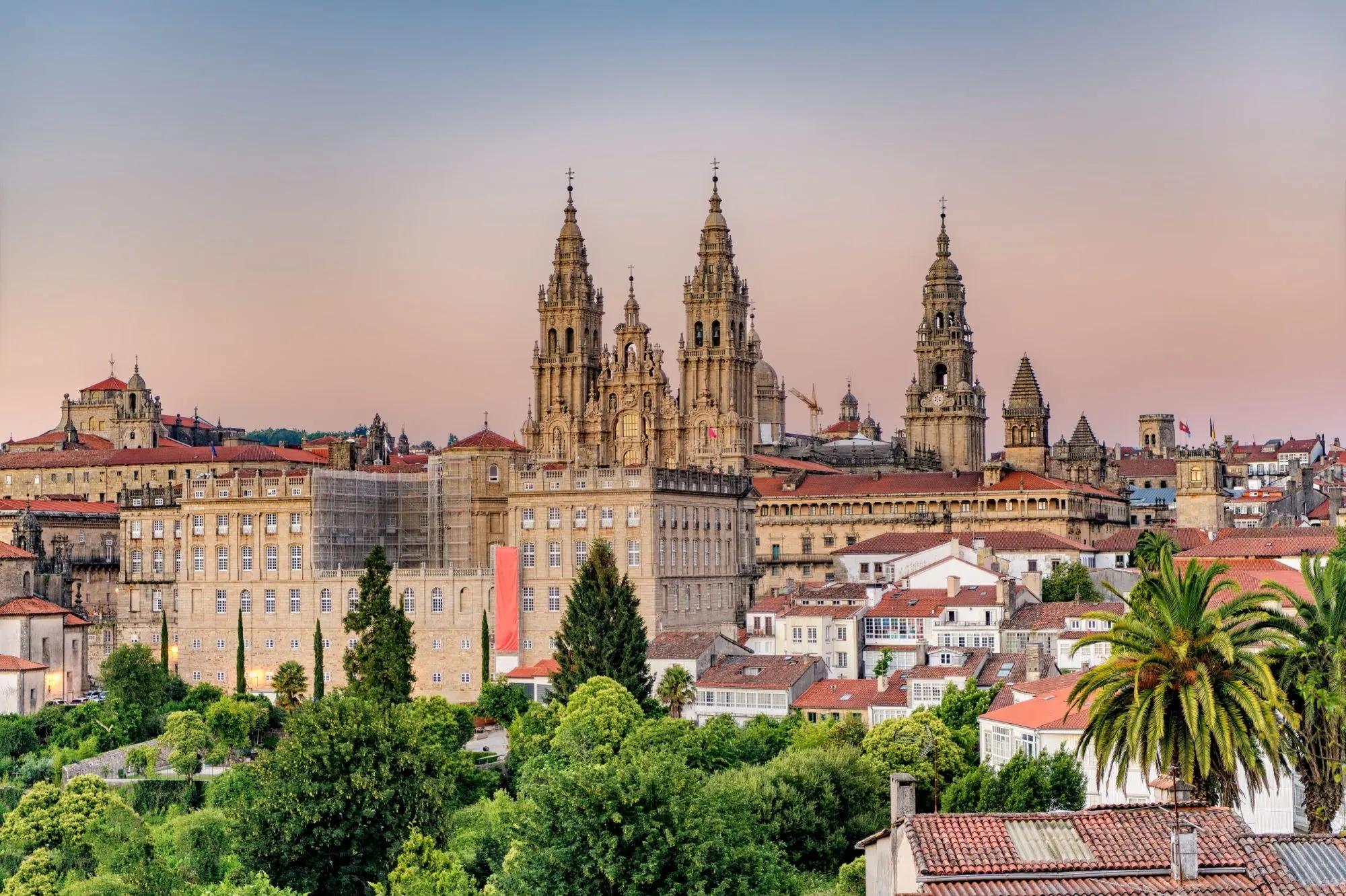








Vigo to Santiago de Compostela
7 days / 6 nights
|
Starting point
Vigo
Finish point
Santiago de Compostela
Season
From March to November
Technical level
1/5
Fitness level
3/5
Tour type
Pilgrimage
Starting point
Vigo
Finish point
Santiago de Compostela
Season
From March to November
Technical level
1/5
Fitness level
3/5
Tour type
Pilgrimage
Highlights
- Explore Vigo's vibrant streets and savor its renowned seafood delicacies
- Wander through Pontevedra's medieval heart, alive with history and culture
- Relish Arcade's famous oysters, a taste of local culinary tradition
- Soak in the tranquility of Galicia's lush eucalyptus forests
- Uncover the legends of Padrón, steeped in the lore of St. James
- Experience the spiritual culmination at Santiago de Compostela's majestic cathedral
Itinerary of the trip
FREE ITINERARY
Get Your Travel Itinerary
Loved the itinerary? Enter your email below, and we'll send a copy straight to your inbox.
What’s included in the price?
Self-guided
NOT INCLUDED
OPTIONAL EXTRAS
What to bring to the tour
- Hiking shoes/boots
- 25 to 35-liter backpack
- Base layer
- Sports T-shirts
- Hiking shorts
- Hiking water-repellent pants
- Waterproof jacket
- Midlayer
- Sports socks and underwear
- Leisurewear for evenings
- Shade hat/cap
- Sunscreen
- Sunglasses
- Hiking poles
- ID card or passport
- Snacks
- Cash
- Water bottles or hydration pack
- Toiletries
Spanning a shorter but equally enriching distance, this section of Camino Portugues Coastal is perfect for those seeking a more condensed Camino experience.
It offers a scenic exploration, from the tranquil eucalyptus forests and quaint rural villages near Arcade to the lively medieval streets of Pontevedra.
The path leads pilgrims through picturesque hamlets like Tivo and the spa town of Caldas de Reis, culminating in the spiritual and architectural magnificence of Santiago de Compostela.
This route highlights the seamless blend of natural serenity and historical richness. Walk across the historic Ponte Sampaio, admire the guiding statue of Saint James in Lombo da Maceira, and feel the historical significance of Padrón, where the journey of St. James's body to Santiago is said to have begun.
Our commitment to your journey encompasses comfortable accommodations, efficient luggage transfers, and ongoing support, ensuring a hassle-free pilgrimage.
Equipped with comprehensive guides and GPS navigation, your journey from Vigo to Santiago will be entirely stress-free.
Can you hear the coastal whispers? It's up to you to answer them!
Start planning today!
The sooner the better - guaranteed availability and best prices if you don't wait for too long.
Frequently Asked Questions
Ratings & Reviews

5.0 average rating

We had a lovely hike today with our guide Klemen. He personalized the tour on our needs and interests, so that we saw places we wouldn't without his experience. The hike was a little bit slippery after the rain from the last days and it went a lot upwards, but it was totally worth it! Thanks again :)


We had a lovely hike today with our guide Klemen. He personalized the tour on our needs and interests, so that we saw places we wouldn't without his experience. The hike was a little bit slippery after the rain from the last days and it went a lot upwards, but it was totally worth it! Thanks again :)


All available guidance options
Self-guided
Are you looking for a good adventure and limitless flexibility? Then you should try out a self-guided tour, perfect for independent explorers who want to set their own pace. Without the need to stick to a group schedule, you’re free to linger at scenic viewpoints while the logistics are taken care of in advance.

HASSLE-FREE
We handle itineraries, accommodations, and anything else you prefer not to deal with, so you can enjoy a carefree hike.
.svg)
TRIED & TESTED ADVENTURES
Only the best of Camino de Santiago, cherry-picked by our local team with an in-depth knowledge of the region.

SELF-GUIDED TRAVEL
Explore independently and with confidence while we keep everything running from behind the scenes.
TRUSTED BY MANY
Since 2014, we have taken care of thousands of happy customers, making it our mission to put your satisfaction first.








